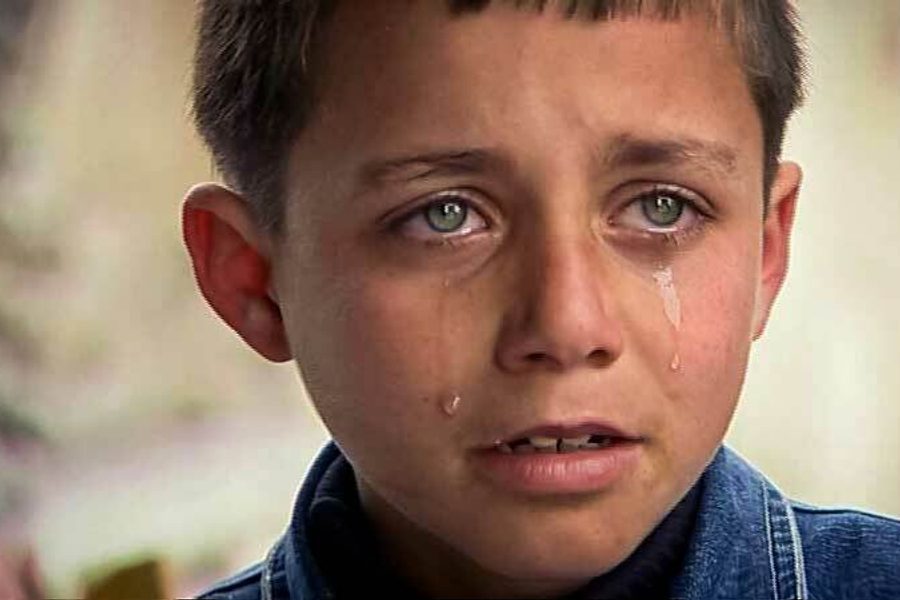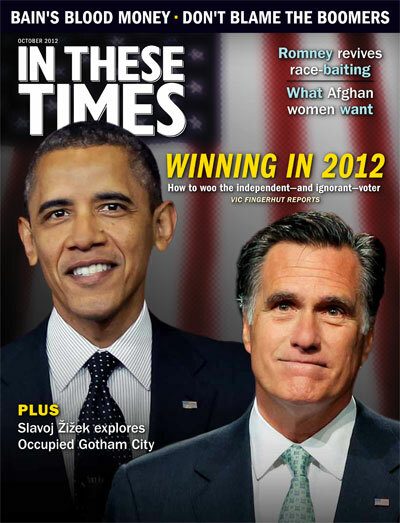Tears of Gaza
A new documentary explores the Gaza War from the point of view of children.
Michael Atkinson

We privileged Westerners can opine and argue about issues like the Palestinian-Israeli conflict, but our position is not unlike that of a bombing pilot, a mile high and seeing only a tiny map on an electronic screen. From this far away, we can afford to have nuanced perspectives, taking cultural differences and ancient history into consideration.
In the proverbial boots on the proverbial ground, it’s another story, which is what good documentaries like Vibeke Løkkeberg’s Tears of Gaza provide. A portrait of the civilian existence in Gaza during the Israeli siege of 2008-2009 as lived by children, the film seethes with the moral authority of a kid questioning the homicidal folly of the adult world. Løkkeberg, a popular Norwegian artist and public figure, couldn’t gain access to Gaza during the conflict, and so she returned after the 22-day war to film the children who survived and, crucially, to collect cell-phone footage taken by civilians in the street.
As a result, there are things in Tears of Gaza you don’t want to see. Civilians converging on a bombed house and pulling the crushed corpse of a toddler from the rubble. Streets littered with phosphorous-bomb-scorched body parts. Infants in the hospital, bawling beside their dead mothers. Preteen girls falling to their knees in tears, trying to tell Løkkeberg’s camera about what they’ve seen. Dead babies, scores of them, some with bullet holes at the tops of their skulls, the sign of what an outraged Palestinian calls “short-range killing.” That is, execution.
You realize how much Gaza is just like any other medium-sized, low-rent modern metropolis (“one of the world’s most populated areas,” the film notes), how familiar and ordinary it is. So when you see the bombs hit from the point of view of the man on the street, it’s jarring, as if your own neighborhood were being devastated, and your own cell phone capturing it. The unvarnished immediacy and access that mobile technology provides seems to be the future of documentary filmmaking — and possibly the salvation of modern society, a way for all of us to see firsthand the havoc and bloodletting our politicians create.
It’s been said too often that it’s impossible to be objective about the Gaza War, but what’s more objective than a man standing in his own street, filming his neighbors being killed?
Seeing phosphorous shrapnel raining down on an average city block makes you wonder how the Israelis justify such malevolence — and how foolish they are, to think that this mutilation and horror might pacify the Arab population rather than ignite a million oaths of vengeance.
Løkkeberg steers clear of the politics of the Gaza War, correctly seeing them as beside the point. She doesn’t have to state how disproportionate the Israeli attack was — killing more than 1,200 civilians in response to handmade Islamic Jihad fertilizer-fueled “rockets” and mortar shots that randomly killed four Israelis in all of 2008.
Instead, she hones in on the children, three in particular, and in this aspect Tears of Gaza is more of a traditional modern doc, setting scenes up for the tykes, and squeezing our hearts as they crawl through the rubble and recount how their families were annihilated in their living rooms. It’s manipulative but also, ironically, ethical. Opal-eyed urchins gazing up sadly out of apartment buildings turned into bloodied bomb craters is, we know, a trope designed to turn us into mush. But it’s also reality. Was Løkkeberg supposed to avoid the traumatized preteens?
By avoiding politics, Løkkeberg has made a most scalding film. You could argue that is because politics as we know it in the media slipstream is often little more than night and fog, bread and circuses — distractions from the dead children. How else could the power systems of Israel or the United States or any other military-prioritizing state sustain themselves? Minus the hazy scrim of propaganda and the unsightly spectacle of politicians fighting for their own careers, you see what’s real and what matters. In its own way, Tears of Gaza loudly indicts the forms of modern social discourse, calling its self-interested bluff with every glimpse of lifeless baby and charred flesh. There isn’t much more that we can hope for from a single film.
Tears of Gaza opens in select U.S. theaters Friday, September 21.









